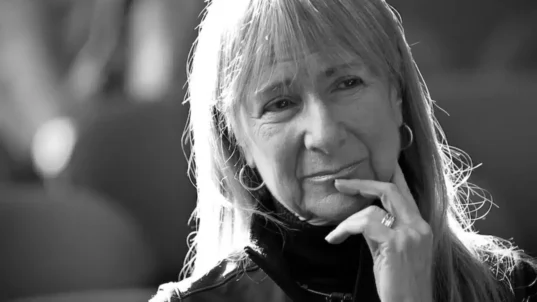
George Floyd protest in Grand Army Plaza, June 7, 2020. By Rhododendrites – Own work, CC BY-SA 4.0
What’s your vision of an ideal future for “public safety”?
That was the question at the heart of the third of our three-part Community Conversation Series on Public Safety, Race, and Society. We wanted to create a space for people to envision a better future for public safety–and to talk about some of the things we might do to get to a better future. This was a chance to stretch ourselves beyond the status quo and imagine new possibilities. This series was an exploration of different societal concerns arising from the police killing of George Floyd and the street protests for Black Lives Matter. In our first conversation, we focused on exploring what issues and questions we saw rising up through those protests. In the second event, we explored more deeply what could be different dimensions of “public safety” and who, or what institutions, might play a role in public safety. We have been focusing on “public safety” to broaden the lens beyond policing, since policing is not an end in itself, but is a means to support community well-being and public safety.
Below you’ll find a rough summary of ideas that came up in our third and final conversation of the series. In these conversations we encourage participants to help each other flesh out their ideas and to consider different perspectives, even ones they might disagree with. This series was a collaboration of IONA, the DC Office on Aging, and the Interactivity Foundation. Watch this space for information about our upcoming fall series.
Visions of an ideal future for public safety, race, and society
- A public-spirited society, where people are oriented around the common good, are as invested in each other as they are in themselves, and take care of those in need
- A society where people see themselves as all part of “one race,” the human race, and celebrate difference within that unity
- A society oriented around equality and without the socio-economic inequalities that we see today
- A society where everyone is welcome everywhere—there’s no neighborhood or area off-limits to any person or group of any status
- A society that focuses on justice for all people
- Communities where people can be themselves and live their authentic lives without fear or risk, no matter how different they might be from others
- Mixed communities built around the idea of fostering interactions among people of all different types or groups (socio-economic status, race and ethnicity, age, etc.), neighborhoods with:
- More public spaces, such as parks, public garden plots, open to all community members
- More shared and cooperative housing, and more multi-family homes, so people can help each other out and so it’s easier to age-in-place
- Multi-income neighborhoods with housing options for every income level, including public housing
- Communities that feel as safe as a gated community without being gated, where you could walk at anywhere anytime and feel safe
- Communities designed around the idea of making everyone feel safe and conveying that we are all in this together
- Communities where there are more protections and more ways of intervening to solve problems without the police
- There are community resource centers to support community needs, including mental and physical healthcare
- There are non-police intervenors (social workers, negotiators, mental health experts, etc.) to deal with problems that come up in community, greatly reducing the issues police are asked to address
- A society where police…
- Live in the communities they serve; they introduce themselves and are known in the community
- Are held to high professional standards of integrity and accountability
- Are trained to de-escalate conflict situations
- Mostly focus on violent crime and let other community intervenors deal with other societal problems
- A society without white supremacists or hate-groups
- A society where it’s common to see interracial couples or families in popular culture
- A society with no fears about being targeted for “driving while black”
Possible pathways to a better future for public safety, race, and society
- We need programs that counter isolation and social disconnection across many lines of separation, including race-ethnicity, age, income, etc.
- Focus on fostering a public spirit for the common good rather than the consumerism of each person out for their own
- Focus efforts on having fully formed and well-educated citizens
- Reform our educational systems to be anti-racist, to teaching the history of racism in our country, and appreciation for our diversity
- We need to learn from each other and about each other—learn what it is like to be “other”
- Design and fund mixed neighborhoods with a wide-range of housing options at all income levels, to make all neighborhoods integrated across all sorts of dividing lines
- Build on and develop programs for multi-family cohousing or shared housing, where people have shared responsibilities and shared resources
- Communal or shared meals as a way to form social connections and reduce burdens on individual families
- Multigenerational housing options to help seniors age in place and help families with childcare, etc.
- Develop communities with a “village” approach, where people are actively encouraged to look out for each other and the neighborhood
- Shift community design standards to make the default focus on social interaction, not isolation—drop the model of the isolated single-family home
- Focus on sustainability—it’s not environmentally sustainable for us to keep designing sprawling communities around the ideal of retreating into isolated single-family homes
- Design communities to be safe spaces, with adequate lighting and video surveillance
- Create and maintain more public spaces for social interaction for all members of the community: parks, communities gardens, etc.—shared spaces for shared activities to foster stronger social bonds
- Create a new social contract in the US focused on bridging divides locally and nationally and conveying that we all are responsible
- Develop and fund programs for national service, have young people serve in communities different from their own
- Provide support for parents and families of all types
- Make relevant technology universally available and use it for connecting communities for local problem-solving and community meetings
- Reorganize and professionalize the police
- Establish high standards for accountability, with a national database to enforce ethical conduct
- Train for de-escalation
- Demilitarize the police
- Develop true community-based policing, where police live where they work and are active in their neighborhoods
- Reduce the need for policing by decriminalizing many current problems (drug use, homelessness, etc.) and shifting the focus to other forms of intervention
- Invest in other community resources and other kinds of intervenors (social workers, mental health care, etc.) to address societal problems so the police don’t have to
- Create a new kind of uniform and name for these other types of service providers as new sorts of first responders
- Create and fund community resource centers for all community members to deal with issues like jobs, healthcare—mental and physical, education, recreation, etc.
- Create and fund resources for local problem solving, so communities can solve their own problems before they get bigger
- Educate the public on these resources and who to call—so they won’t keep calling the police to solve all problems (we need other kinds of protection or help than what the police can provide)
- Make smarter laws—not harsher ones—and be more focused on restoring our community than on punishing people
- Reform the prison system
- Art drives life: create more depictions of diversity and positive interactions across differences in our popular media
- Create a new norm of focusing on others in our social media—“otheries” instead of “selfies”



